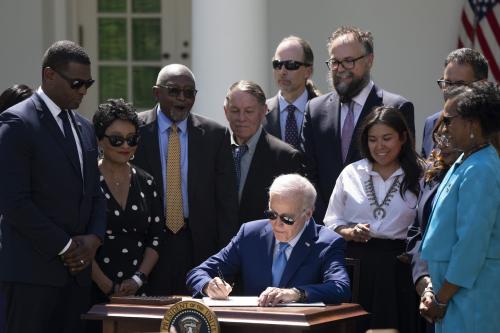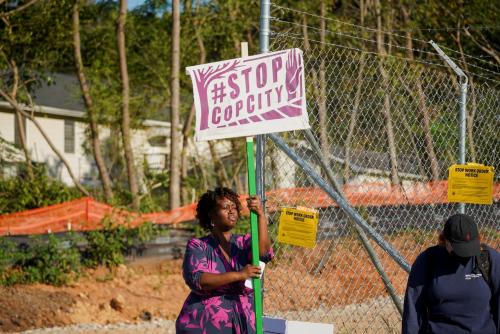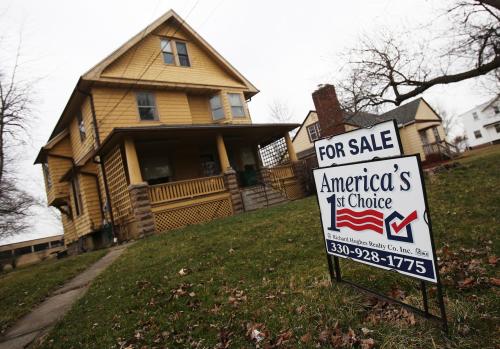In 1996, the city of Atlanta hosted the Centennial Olympic Games, a global spectacle that promised to transform the city and elevate its status on the world stage. However, beneath the glitz and grandeur of the Olympics lay a more sobering reality: the displacement of communities, particularly people of color, through the use of eminent domain. Eminent domain is referred to as “the power of the government to take private property and convert it into public use.” However, federal and state governments can only exercise this power if just compensation, a form of payment, is given to property owners. This event serves as a poignant example of how large-scale sporting events can significantly impact urban communities, especially in terms of environmental and racial justice.
The Atlanta Olympics were touted as a catalyst for urban renewal, but the reality was more complex. To make way for new infrastructure and facilities, city officials utilized eminent domain to seize and demolish properties in the neighborhoods of Vine City and English Avenue, predominantly inhabited by Black residents. This forced displacement was justified as a means to revitalize the city and attract investment. However, the outcomes for these communities were dire. Almost 30,000 Atlantans were uprooted from their homes and faced challenges in finding affordable housing, and about 9,000 homeless people were illegally arrested, contributing to long-term economic instability for constituents of color.
Beyond the immediate social impacts, the environmental consequences of such displacement can be profound. Take the 1984 Summer Olympics, held in Los Angeles, which had a notable impact on the environment. On the positive side, the Games led to significant infrastructure improvements, such as the development of the McDonald’s Olympic Swim Stadium and the enhancement of green spaces like the Exposition Park Rose Garden. However, the environmental costs were substantial as well. The influx of visitors and associated transportation needs led to elevated air pollution levels, which impacted both local air quality and the health of Olympic athletes. This became one of many causes for the passing of the 1988 California Clean Air Act. Furthermore, like Atlanta, Los Angeles enforced laws and policing tactics that displaced homeless populations instead of considering healthy solutions to counter such a massive crisis. While the 1984 Olympics demonstrated how large-scale events could drive urban development, it also highlighted the need for more sustainable practices to mitigate their environmental footprint and focus on addressing homelessness rather than covering it up.
The environmental footprint of sporting events
The legacy of the 1984 and 1996 Olympics highlights a broader trend observed in subsequent sporting events. Major sporting events, from the World Cup to the Super Bowl, often drive large-scale urban development projects that can lead to environmental degradation. In many cases, these projects prioritize economic and aesthetic goals over the well-being of local communities and the environment.
One major environmental concern associated with sporting events is the increase in waste generation. Massive crowds generate substantial amounts of waste, from food and beverage containers to promotional materials. While many events have adopted recycling programs, the sheer volume of waste can overwhelm local waste management systems. Moreover, the temporary nature of some of these facilities and the rush to complete construction can result in poorly managed waste and pollution.
Another issue is the strain on local infrastructure. The influx of visitors often leads to increased traffic congestion, higher emissions of greenhouse gases, and a greater demand for resources such as water and energy. The long-term environmental impact of these demands can be exacerbated if the infrastructure remains underused after the event, leading to unnecessary resource consumption and maintenance costs.
In response to these challenges, some cities have begun to adopt more sustainable practices when hosting sporting events. The International Olympic Committee (IOC) changed its language from “social responsibility” to “sustainable development” to be more inclusive about how the Olympic Games may influence the environments of the host cities. For example, the London 2012 Olympics made a concerted effort to incorporate sustainability into their planning, including the use of recycled materials, energy-efficient systems, and green building standards. The recently concluded Paris 2024 Olympics continued this trend, emphasizing carbon neutrality and the use of renewable energy sources. However, these efforts are not without their limitations. While benchmarks like those set in London and Paris are promising, the inconsistent adoption of sustainability practices across different host cities, coupled with the decline in overall sustainability scores for recent Olympics, highlights the need for a more rigorous and universally applied approach. The true measure of success in sustainable event planning lies not just in the implementation of green technologies but also in the broader consideration of social and environmental justice. Ensuring that local communities are not disproportionately affected by displacement and that environmental impacts are managed responsibly requires a holistic approach that integrates community feedback and long-term planning.
Some studies have made several recommendations to achieve higher levels of sustainability such as: 1) developing and implementing pilot events to “test” and understand how larger events will affect the environment; 2) partnering with local, state, and national nonprofit agencies and organizations to learn about their approaches to sustainability and environmental protection; 3) develop contracts to engage other partners to develop communication tools, manage and assess sustainability plans, and develop guidelines; 4) create a sustainability committee that is aligned with the region’s goals for sustainable development that can coordinate and manage the sustainability process and plans with appropriate resources; and 5) hiring a full-time sustainability manager who leads all sustainability initiatives.
Prioritizing the needs of community members
As cities like Atlanta and Los Angeles prepare to host major international events such as the FIFA World Cup and the 2028 Summer Olympics, the legacy of past sporting events highlights the delicate balance between ambitious urban development and the rights of local communities. The tensions experienced during the 1984 and 1996 Summer Olympics offer a cautionary tale about the potential for large-scale projects to both revitalize and disrupt urban areas. Future host cities must navigate these challenges carefully, ensuring that their aspirations for global prominence do not overshadow the needs and voices of their current residents.
To achieve this, cities should implement a framework that prioritizes sustainable development and community engagement. This includes establishing transparent dialogue channels with local communities to ensure their concerns are heard and addressed, integrating community needs into the planning process, and creating legacy programs that provide long-term benefits such as improved infrastructure and local job opportunities. Additionally, host cities can adopt green building practices and invest in projects that enhance public spaces and local services. Therefore, if a host city decides to build infrastructure for a major sporting event that only lasts a few weeks, leaders should consider how constituents can take advantage of these buildings once an event is over. For instance, Morehouse College, an all-male historically Black college and university (HBCU) in Georgia, received Frank L. Forbes Arena which hosted the early rounds of Olympic basketball and is now a campus fixture for collegiate athletics. By prioritizing these strategies, cities can enhance their global profile while ensuring that the well-being and voices of their residents are not overshadowed by the demands of hosting international events.
Some of the long-term use plans of Olympic host cities may not be materialized until years later, leaving many sites abandoned only to later become public nuisances and hazardous zones. In 2020, a Brazilian judge ordered the Rio aquatic center to be closed citing safety concerns. Rio saw the revival of some of these facilities in 2024 with the opening of schools. Other plans for the Rio Games’ sites include using these spaces to create more parks and entertainment venues.
Housing insecurity is a major social issue that cities must manage delicately. Los Angeles faces a critical challenge in addressing housing insecurity and homelessness as it prepares for the 2028 Olympics. The city must implement comprehensive strategies to provide sustainable housing solutions including temporary housing solutions and homelessness prevention programs. Mayor Karen Bass of Los Angeles has made homelessness her main priority ahead of the Games, noting that “just moving people around is not going to be the solution.” Bass will have a tall task on her hands to prevent the displacement of roughly 30,000 unsheltered homeless individuals, who are at risk of being pushed out of public spaces to present a more polished image during the global spectacle. The recent U.S. Supreme Court decision, which allows cities to enforce anti-camping laws only if adequate shelter is available, could significantly harm and punish the homeless population. Democratic leaders in California are split on this issue as some see the decision as a way to “embolden those who wish to criminalize unhoused Angelenos,” while others like Governor Gavin Newsom believe that it “removes the legal ambiguities that have tied the hands of local officials for years.” Nevertheless, this ruling could lead to increased pressure on the Bass administration to either provide sufficient shelter or face legal challenges when attempting to clear encampments, making it imperative for the city to balance the need for public order with the rights and well-being of its unhoused population.
Looking toward LA28
While sporting events can bring significant economic and social benefits to urban communities, they also carry substantial environmental and social risks. The lessons from the 1984 Los Angeles Olympics and the 1996 Atlanta Olympics underscore the importance of addressing these risks through thoughtful, inclusive, and sustainable planning. By prioritizing the well-being of both people and the environment, future sporting events can strive to create positive legacies that extend beyond the excitement of the Games.
With the 2028 Los Angeles Olympics on the horizon, organizers are committed to surpassing the sustainability efforts of the 1984 Games and learning from Games in other host cities, such as the Paris Olympics. Key strategies include leveraging more than 80 existing venues to minimize construction impact, prioritizing public transportation during a “no-car Games,” and aiming for “Energy Positive Games” by generating more renewable energy than the Games normally consume. Additionally, LA28 is collaborating with local communities and businesses, such as LA Urban League and LA Conservation Corps, to reduce waste, promote recycling, and leave a lasting positive environmental footprint. By incorporating sustainability as a core principle of LA28, the 2028 Olympics is striving to be a catalyst for a greener, more sustainable Los Angeles. The question is, will it come to fruition in four years?
The Brookings Institution is committed to quality, independence, and impact.
We are supported by a diverse array of funders. In line with our values and policies, each Brookings publication represents the sole views of its author(s).








Commentary
Olympic transformation of metropolitan cities—for better or for worse
August 29, 2024